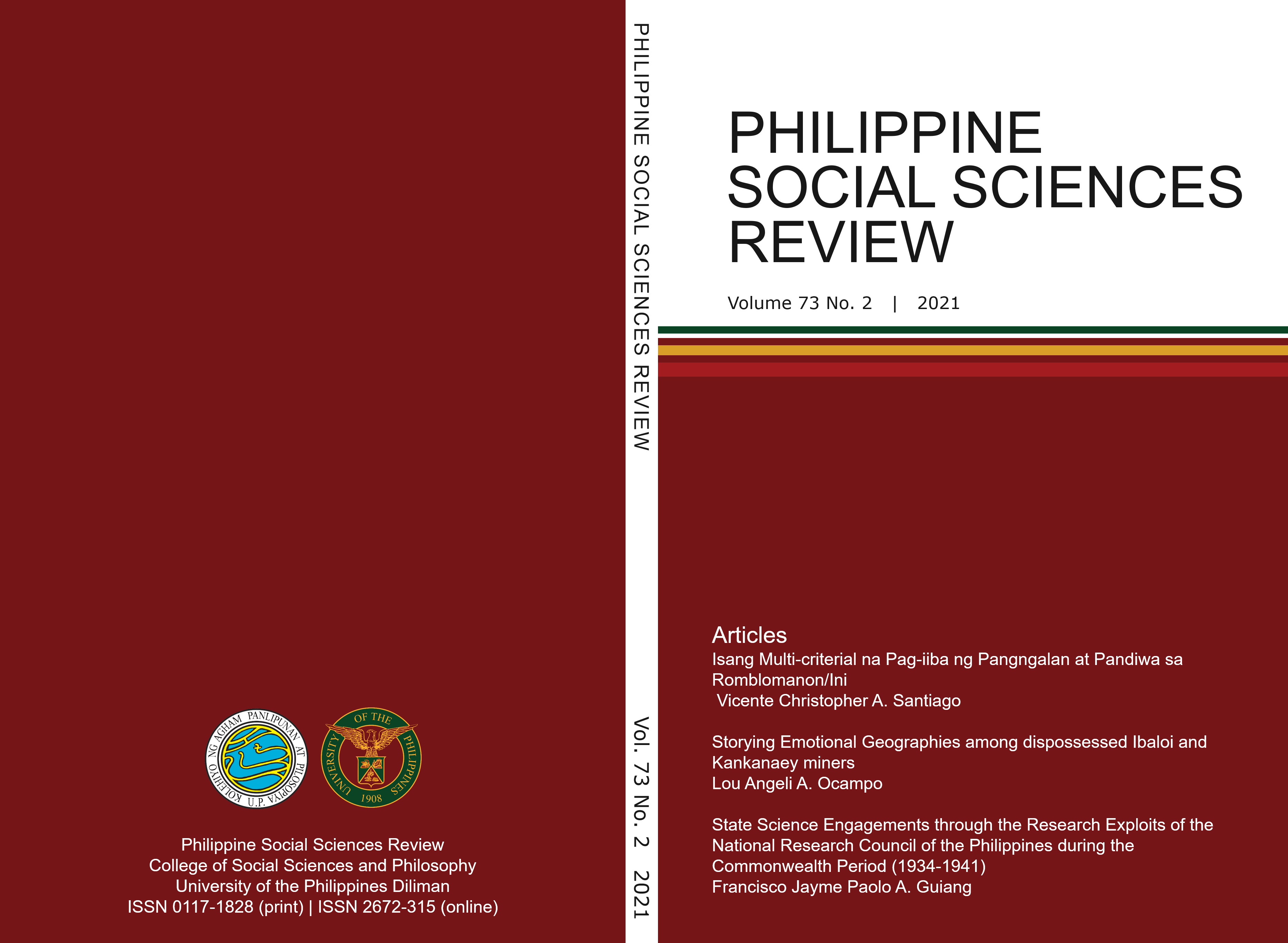Science for National Development: State-Science Engagements through the Research Exploits of the National Research Council of the Philippines during the Commonwealth Period (1934-1941)
Abstract
“Give the Filipino scientists a chance and they will achieve economic self-sufficiency” said Dr. Hilario Lara (cited in NRCP, 1984, p. 1), president of the Philippine Scientific Society in front of the delegates of the Second Philippine Science Convention on 17 February 1933. Dr. Lara urged the government, still under the tutelage of American colonialism, to establish a national research council that will produce scientific researches that could aid in national development. In the same occasion, Senate President Manuel L. Quezon was the guest speaker and he stressed the potential of science in harnessing development for a nation preparing for independence: “The time has come for the government to utilize to full advantage our scientific men and women, make them come out of their shell, so to speak, and advise us on matters pertaining to their respective fields” (cited in ibid.). The National Research Council of the Philippines (NRCP) was eventually created on 08 December 1933 by virtue of Act No. 4120 approved by the Ninth Philippine Legislature.1 The council was then inaugurated on 23 March 1934 at the UP School of Hygiene and Public Health in Manila with 114 scientists and technologists as charter members (NRCP, 1935a, p. 1; Baldoza, 2020, p. 96; Guiang, 2021, p. 20). Even before the creation of the Philippine Commonwealth, Filipinos were already exploring means to pave the way for self-government. Evidently, scientific progress was seen as one of the vital components in the process of achieving independence and the NRCP became instrumental in the state’s endeavors.
Published
2024-05-30
How to Cite
GUIANG, Francisco Jayme Paolo.
Science for National Development: State-Science Engagements through the Research Exploits of the National Research Council of the Philippines during the Commonwealth Period (1934-1941).
Philippine Social Sciences Review, [S.l.], may 2024.
ISSN 2672-3158.
Available at: <https://journals.upd.edu.ph/index.php/pssr/article/view/9657>. Date accessed: 22 sep. 2025.
Section
Articles


